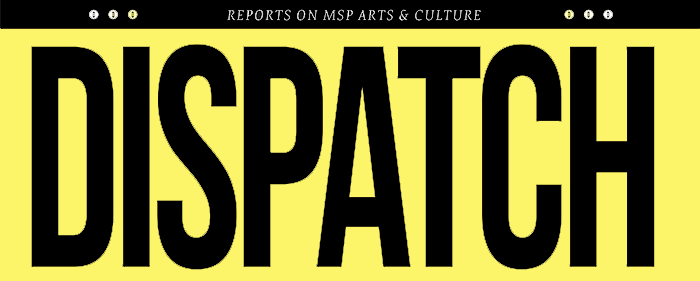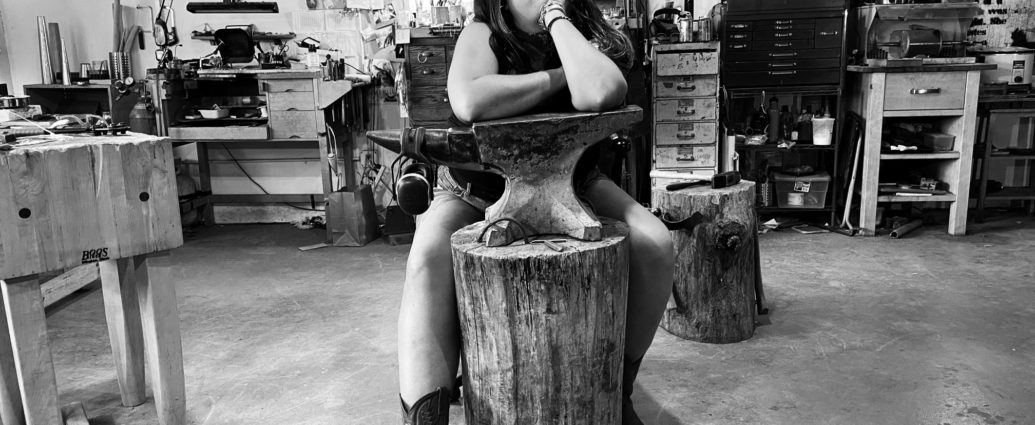Metalsmith Betty Jager has always done it her own way.
WORDS BY KATIE DOHMAN
Betty Jager grew up in Tacoma, Washington, with her mom, a teacher, and her dad, a construction worker, and three siblings (all older), framed by the ocean, mountains, and woods. They didn’t have a lot of money, but they had deep familial ties and her parents tried to instill a love of the natural world. Her first sentence: “I’ll do it myself.”
She remembers her first pieces of jewelry being daisy chains, or things she put together with her dad’s electrical tape, copper wire, and nuts and bolts she lifted from the garage. (This would prove to be an early influence, looking at her jewelry now.) By age 12, she was 5’6” and getting all sorts of unwanted attention from men. It wasn’t until she was in her mid-20s that her mom told her she had entered her into school two years early because she was so tall and she worried the kids would tease her.
The teasing came anyway. Kids at school seemed to know she was queer, maybe even before she had words for it, hurling slurs at her, keeping up a relentless stream of bullying that was quieted some when her college-age sister returned to the high school campus and pushed a finger into the lead bully’s chest, the son of one of the school administrators. “I’m a white, able bodied, looking like any old long haired straight girl but I’m not, and that’s my superpower,” she says. “That was a pivotal moment in seeing people [with privilege] stand up for me and others.”
She wore a patent leather trenchcoat to school she found at a Nine Inch Nails concert, and buried herself in the library, reading riot grrrl zines and turning to encyclopedias when she didn’t understand something. She and her friend started a band and her friend was interested in making out with longhaired boys in Seattle, but Jager just wanted to rock.
And when graduation rolled around, friends began having babies, but she was ready for a different adventure. She was on her own for college. “I found an ad for MCTC in the back of a magazine, made a call and asked to speak to the head of the gemology department and to make an appointment to visit the establishment,” she says with her contagious giggle. “They said, ‘No one has ever done that. Ever.’”
All signs pointed to yes. She packed up her stuff, hopped on the train, and got off in Minneapolis and got hired as a manager at a Borders bookstore to support herself. “I decided I had to move my way into an apprenticeship,” she says. “My dad is in the construction industry and you have to prove your worth.” So she approached Stephen Vincent of Studio Vincent and pitched herself as a salesperson who would earn her way into an apprenticeship. Impressed with her pitch and her gravity, Vincent hired her. She worked there for nine years, apprenticing for seven, and waited tables so she could buy herself a five-figure platinum-and-diamond ring she fell in love with.
But as she was apprenticing she was also developing her own voice and eventually moved into a studio in the Northrup King Building, where she started turning out her metalsmithed pieces—chained bracelets, otherworldly amulets, edgy hoops. She made decidedly non-traditional rock’n’roll engagement and wedding rings, with texture, colored diamonds, witchy stones and oversized profiles.
Throughout her artistic evolution, Jager says jewelry was a way to process all these feelings— torment and depression and sadness and revival—and maybe not always having to tell anybody about it. “They never asked what my jewelry means,” she says. “I could make it and keep it or tear it apart again to not be reminded of particular moments, or infuse them with joy. Now people ask about it, and sometimes they don’t ask and I tell them anyway. I’m just so sentimental and I build feelings into my pieces and they’re a very cool connection to ancient times.”
Jager, fully embracing her “queerdo” status far from the confines of a late ’90s/turn of the millennium environment, now often supports queer community causes through Instagram and studio jewelry sales, and conversations she sparks on social media posts, among other efforts.
“I’ve always wanted to be unique, and it helps other people too when they have a beautiful piece that will last a long time if they take good care of it and it’s not like anyone else’s. It’s a little weird and a little off-center, but also finely crafted. I want them to feel seen and unique, especially my queer followers,” she says. “If I can be a big ol’ weird queerdo, that might give them strength to, like, step into believing in themselves, and having a little more confidence. It is 2023, but being queer is still not accepted everywhere by everyone all the time. And we need others to fight for us, too.”

